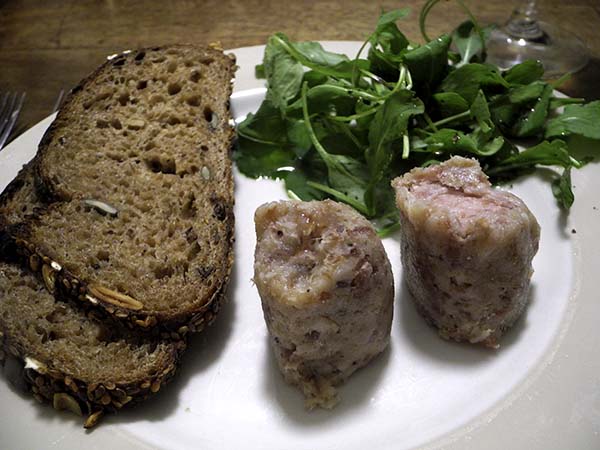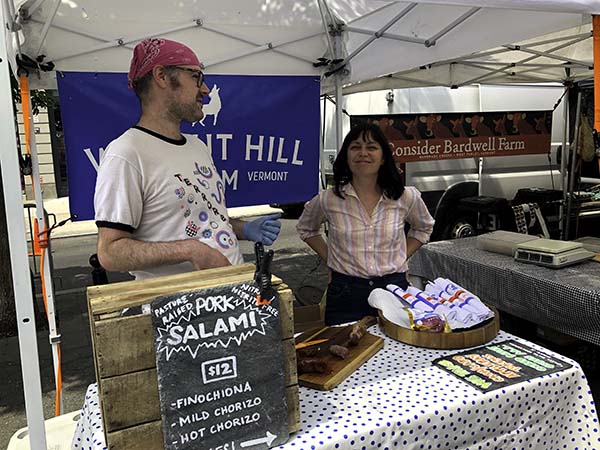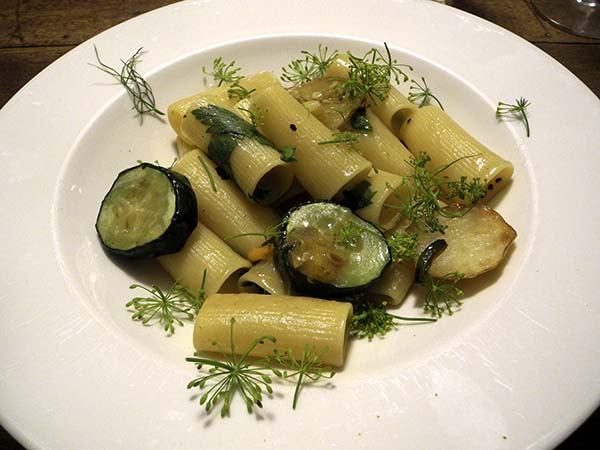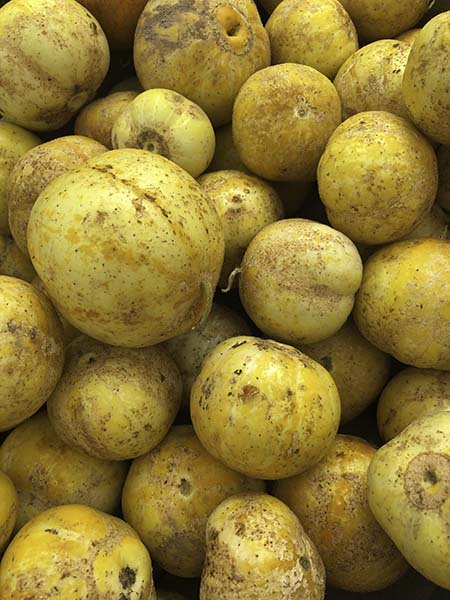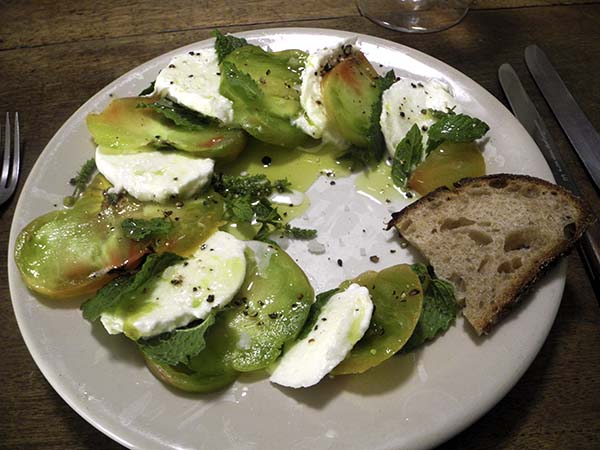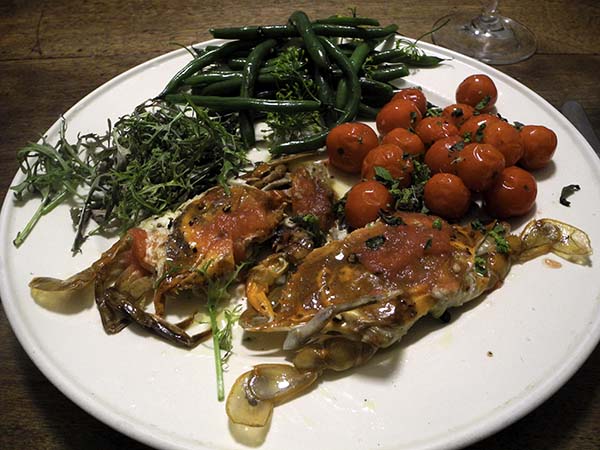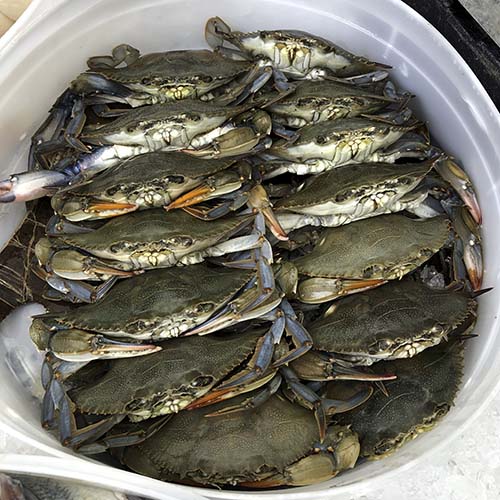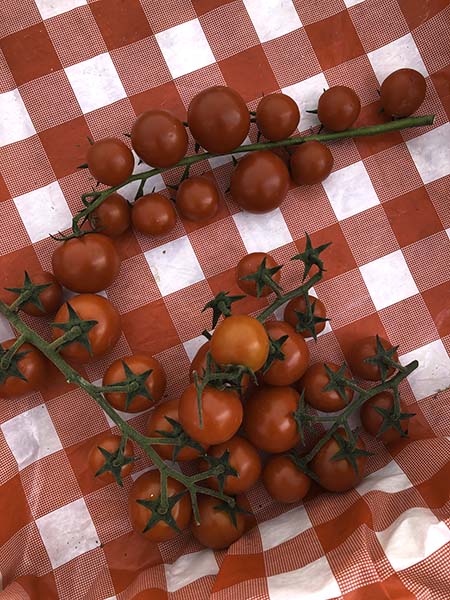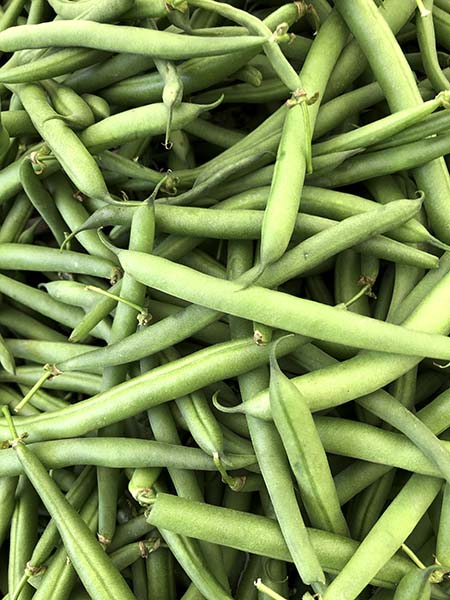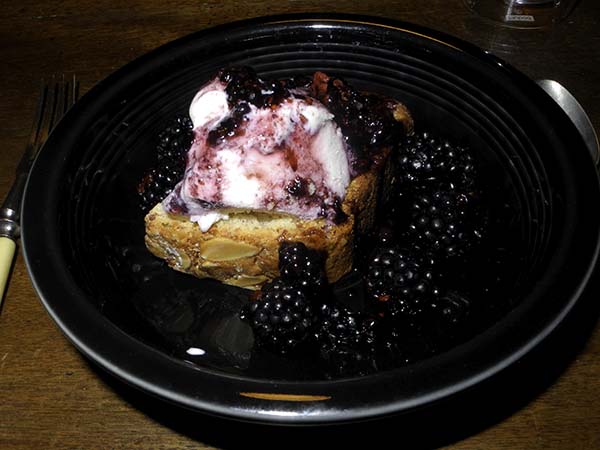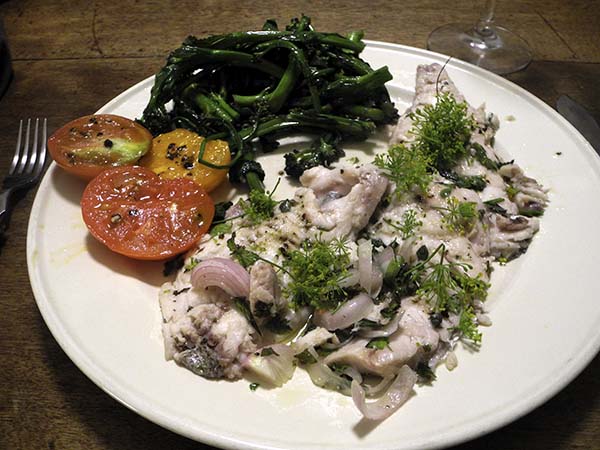
I’ll be honest. I really stumbled in preparing this meal. It was basically pretty simple in conception, and it should have been simple to execute. It didn’t happen that way, but I managed to recover from several stupid slips, and while it looks a little messy in the picture, it tasted great, and the music was super!
I had all the time in the world to assemble things before actually starting, and that’s exactly what I did, or at least what I thought I had done. Maybe I was too relaxed, because when it came time to do the actual cooking it seemed like I had forgotten how to do anything. Just before preparing the porgy I made the mistake of putting the garlic scapes that were to precede it in its pan into the pot in which the broccolini was to be sautéed, so, having totally forgotten to prepare some garlic for the vegetable, there was now nothing for the fish. A minute later I realized I hadn’t seasoned the fillets, and moments after that I noticed that the hot plate on which I was going to heat up the small heirloom tomatoes hadn’t gotten, well, hot.
Suddenly I was really busy, in fact I almost panicked. I found myself almost simultaneously peeling and chopping some shallots, seasoning the fish – on both sides, and tracing the problem with the hot plate wiring. In the process I ended up losing more or less 2 minutes of the total of only 5 that should have been enough to cook the porgy, but by now I was guessing about when the fish would be ready (it ended done perfectly, although even with the cosmetic dill garnish, as I said, it looks pretty sloppy on the plate, which might at least be partly a function of the delicate size of the fillets). All this while I also had to keep some focus, and my eye, on the 2 vegetables.
But I made it.
- [the description related here is more the ideal than the reality of the actual process last night] six small (2-ounces+) Porgy fillets from P.E. & D.D. Seafood, rinsed, dried, seasoned with sea salt and freshly-ground black pepper, pan-seared, along with 3 small thinly-sliced Japanese shallots from Norwich Meadows Farm, over medium heat inside an ancient 13″-round shallow antique copper pan in a bit of butter and a little olive oil (a total amount of fat of barely 2 tablespoons), the fish basted with the contents of the pan more or less continually for about 2 minutes, using a small brush, then carefully turned over, and the heat reduced to low, a cover placed on the pan (I used a new, tempered-glass universal lid that almost fit snugly between its handles), the filets cooked for about about another 2 minutes before the cover was removed and a mix of 2 or 3 tablespoons of 3 fresh herbs thrown in (this time I used lovage from S. & S.O. Produce Farms, marjoram from Quarton Farm, and spearmint from Stokes Farm) after which the basting was continued for about minute, or until the fish was cooked through, and the fillets arranged on 2 plates with their pan juices and shallot fragments, finished with the juice of one small organic Whole Foods Market Mexican lemon poured over the top, and scissored dill flowers scattered over everything
- three halved small heirloom tomatoes from Norwich Meadows Farm warmed in a little olive oil inside a small copper skillet, seasoned with salt and pepper
- at least a couple handfuls of broccolini (a modern hybrid cross between broccoli and Gai Lan, aka Chinese broccoli) from Quarton Farm in the Union Square Greenmarket, washed and drained in fresh cold water, chopped very roughly, sautéed/wilted over a low flame by being gradually added to a large enameled cast iron pot in which cut pieces of 4 garlic scapes from Norwich Meadows Farm had first been softened in some olive oil over a moderate flame
- the wine, ordered directly from the winery, was an Oregon (Williamette Valley) white, Erath Oregon Pinot Gris 2016
- the music was a 1971 recording of Michael Gielen conducting the Southwest German Radio Symphony Orchestra in an absolutely wonderful performance of Mahler’s 6th Symphony, and then we continued the evening listening to other Gielen/Mahler recordings
